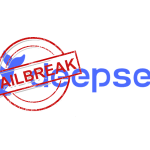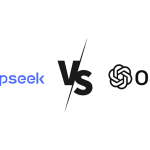- A Complete SEO Guide to Content and Optimization
- Understanding the Importance of SEO
- Overview of Digital Marketing Types
- Understanding SEO (Search Engine Optimization)
- What is SEO?
- How Organic Search Works
- What is SEO Content?
- Understanding Search Intent
- Types of SEO Content
- Tools for SEO Content
- Developing an SEO Content Strategy
- On-Site vs. Off-Site SEO
- 7 Key SEO Optimization Tips
A Complete SEO Guide to Content and Optimization
In today’s digital landscape, having a robust online presence is essential for any technology-focused website. Whether you specialize in cybersecurity, hacking, or the latest technological innovations, following a comprehensive SEO guide is crucial for optimizing your content and driving traffic. This article explores best practices for content and SEO optimization, ensuring your technology website stands out in a crowded market.
Understanding the Importance of SEO
Search Engine Optimization (SEO) is more than just a buzzword; it’s a critical component of any successful online strategy. For technology websites, which often deal with complex and technical topics, SEO ensures that your content reaches the right audience.
Overview of Digital Marketing Types
There are two primary forms of digital marketing: one linked to search engines and the other to social media. The first, “search marketing,” encompasses both organic search techniques and paid advertising, such as Google Adwords.
Understanding SEO (Search Engine Optimization)
SEO isn’t limited to a specific type of content or website. It involves a variety of practices aimed at enhancing visibility on search engines. Implementing an effective SEO Guide requires some technical knowledge, including an understanding of redirects, HTML, and web servers.
But don’t worry, it’s not as complex as it may seem. Let’s explore this SEO Guide together.
What is SEO?
SEO isn’t limited to a specific type of content or website. It involves a variety of practices aimed at enhancing visibility on search engines. Implementing an effective SEO Guide requires some technical knowledge, including an understanding of redirects, HTML, and web servers.
But don’t worry, it’s not as complex as it may seem. Let’s explore this SEO Guide together.
How Organic Search Works
Search engines like Google and Bing determine search results based on the relevance and authority of each webpage and its associated site. Hundreds of factors contribute to a site’s overall score. An effective SEO Guide allows webmasters, marketers, and content creators to influence some of these factors to improve website rankings.
An SEO Guide involves keyword research, on-page optimization, link building, and technical SEO. This article focuses on on-page SEO methods. But before diving into those methods, let’s understand how on-page SEO differs from other SEO techniques.
What is SEO Content?
If you’re new to web marketing, you might have come across the term “SEO content.” To understand what marketers mean by this, it’s useful to break down the term:
“SEO” refers to optimizing a website to improve visibility in search engines like Google. “Content” refers to any information available on the web that users can consume. Combining these two concepts, SEO content is any content created to attract search engine traffic. Of course, there are additional factors to consider for optimizing your organic search, which you can explore in resources like this SEO Guide to Google’s ranking criteria.
Here’s a quick reminder of the key steps in creating SEO content:
- Keyword Research: Focus on keywords with existing search volume to increase the visibility of your content. An SEO Guide can help you identify these keywords.
- Keyword Optimization: Learn where and how to use keywords in your content for maximum impact.
- Content Organization and Optimization: Organize your site’s content logically to benefit both SEO and user experience.
- Content Promotion: Share your new content on social media and build links to enhance visibility.
Understanding Search Intent
If your goal is solely to drive search engine traffic, your results may suffer. To satisfy both search engines and users, you need to offer value beyond SEO content. Avoid creating low-value content that could lead to penalties from Google. Remember, Google prioritizes delivering the best content to its users.
To achieve this, you need to understand the user’s search intent. Why are they searching for this keyword? Do they want information, a product/service recommendation, or to make a purchase? There are three types of search intent:
- Informational Query: Searches for specific information.
- Commercial Query: Searches to find the best product or service for a particular need.
- Transactional Query: Searches with the intent to make a purchase.
To better understand search intent before creating SEO content, consider reading an SEO Guide on how to effectively align content with search intent.
Types of SEO Content
On the web, various forms of information serve different purposes, such as informing, marketing, or driving transactions.
Before continuing, make sure to identify each stage of the search journey to capture user attention at the right moment. An SEO Guide can help you understand these stages. SEO content can take various forms:
- Blog Posts: Informational and a great way to create regular SEO content that attracts links and builds authority.
- Infographics: Informational and can gather significant page views and links.
- Slideshows: Useful for displaying a series of related images.
- Videos: Can be easier to rank for competitive keywords than text-based content.
- Guides and Comparisons: Longer content that details a product or service, often generating leads.
- Product Pages: The cornerstone of e-commerce, serving as both SEO content and landing pages.
Tools for SEO Content
For effective SEO content optimization, you need the right tools. Here are some that cater to beginners and professionals alike, as highlighted in this SEO Guide:
- Textual SEO Content Tools: Tools like SeoQuantum, Google Trends, SEMRush, Ubersuggest, and Antidote help optimize text content for SEO.
- Visual SEO Content Tools: Canva, Vista Create, and Gimp are great for creating optimized visual content.
- Video SEO Content Tools: Tools like PlayPlay, Magisto, Adobe Premiere Elements, and Loom are excellent for video content creation and optimization.
Developing an SEO Content Strategy
Where should you start? If you’ve been writing content randomly, hoping some of it will rank, it’s time to implement a more structured SEO content strategy. This SEO Guide will help you do that.
Here are three steps to define and refine your strategy:
- Define Goals and Target Audience: Determine your website or business goals, which will guide the types of content you should focus on.
- Create an Editorial Calendar: Plan when to publish new content and maintain a regular pace.
- Track SEO Content Performance: Regularly analyze your content to see what’s working and make necessary adjustments.
On-Site vs. Off-Site SEO
On-site SEO involves practices applied to various parts of your website to improve its ranking. Focus on user experience (UX) by ensuring good content quality, image display, readability, and fast page loading. Off-site SEO involves improving your website’s reputation, including link building, mobile optimization, and social media.
This SEO Guide will walk you through both on-site and off-site optimization strategies.
7 Key SEO Optimization Tips
- Respond to Search Queries: Ensure your content meets user needs and includes an h1 tag on each page.
- Improve Website Performance: Optimize images, follow accessibility guidelines, and consult Google’s Starter Guide for best practices.
- Build User Trust: Improve website performance indicators and ensure responsive design.
- Choose the Right Keywords: Use keywords strategically in tags, URLs, and content.
- Expand Related Topics: Increase topical authority by adding related topics and keywords.
- Optimize Snippets: Pay attention to meta tags, URL format, and content publication dates.
- Prioritize Quality: Publish unique, valuable content, avoid plagiarism, and ensure high editorial quality.
By following this SEO Guide, you’ll be better equipped to enhance your website’s visibility and performance in search engine results.
Conclusion: Elevating Your Technology Website with SEO
Content and SEO optimization are essential for the success of any technology website. By following an SEO guide—such as natural keyword integration, clear content structure, and a focus on user experience—you can improve your site’s visibility and attract a larger audience.
As the technology landscape continues to evolve, staying up-to-date with SEO guide trends and techniques will be crucial for maintaining a competitive edge. Implementing the strategies outlined in this article will set your website on the path to success, helping you rank higher in search results and establish your brand as a trusted authority in the technology domain.
Start optimizing your content today by incorporating these SEO guide best practices. Whether you’re writing about the latest cybersecurity threats or the best tools for web development, effective SEO can help you reach a broader audience and achieve your online goals.
To improve your website’s ranking and take advantage of all these SEO guide techniques, use our professional SEO services today and see the difference in your business.






